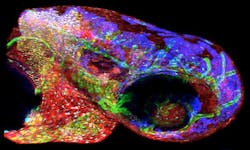Market research shows hyperspectral imaging to grow by 75.3 percent over the next five years
DUBLIN – The global hyperspectral imaging market should grow by 75.3 percent over the next five years, rising from $61.9 million in 2017 to $108.5 million by 2023, predict analysts at market research specialist Research and Markets in Dublin.
Technological advancements like micro-hyperspectral imaging technology are improving data acquisition and analysis, researchers say in the report Global Hyperspectral Imaging Market-Segmented by Application, End-user, and Region-Growth, Trends and Forecast (2018 - 2023).
This kind of a market uptick represents a combined annual growth rate (CAGR) of 9.79 percent over the next five years, analysts say.
Hyperspectral imaging collects and processes information from across the electromagnetic spectrum. It obtains the spectrum for each pixel in the image to find objects, identify materials, or detect processes. Hyperspectral applications include surveillance, astronomy, geosciences, physics, biomedical imaging, and agriculture.
Whereas the human eye sees color of visible light in mostly three bands, spectral imaging divides the spectrum into many more bands, including those beyond the visible. Hyperspectral images have fine wavelength resolution and cover a wide range of wavelengths to measure contiguous spectral bands.
Hyperspectral sensors uncover unique fingerprints in the electromagnetic spectrum called spectral signatures that identify materials like explosives, oil, disturbed soil, and different kinds of foliage.
Micro-hyperspectral technology is for small, lightweight, and efficient hyperspectral imaging instruments that can be deployed in harsh environments.
In environmental studies, the fusion of hyperspectral imaging sensor and airborne light detection and ranging (LiDAR) scanner (ALS) data provides significant potential for a wide variety of applications, analysts say.
Related: Hyperspectral imaging sensors come into their own for aerospace and defense applications
Standard fusion approaches use information from hyperspectral imaging, and distance measurements from the ALS to increase data dimensionality and accuracy.
Companies mentioned in this report include Applied Spectral Imaging Inc.; Brandywine Photonics LLC; Chemimage Corp.; Corning Inc.; Cubert-Gmbh; Gilden Photonics Ltd; UTC Aerospace Systems; Bayspec Inc.; Merrick & Company Inc.; Corescan Pty Ltd.; and Surface Optics Corp.
Topics covered include market insights; market dynamics; global hyperspectral imaging market segmentation; key vendor profiles; investment analysis; and the future of the hyperspectral imaging market.
For more information contact Research and Markets online at www.researchandmarkets.com.
Ready to make a purchase? Search the Military & Aerospace Electronics Buyer's Guide for companies, new products, press releases, and videos
